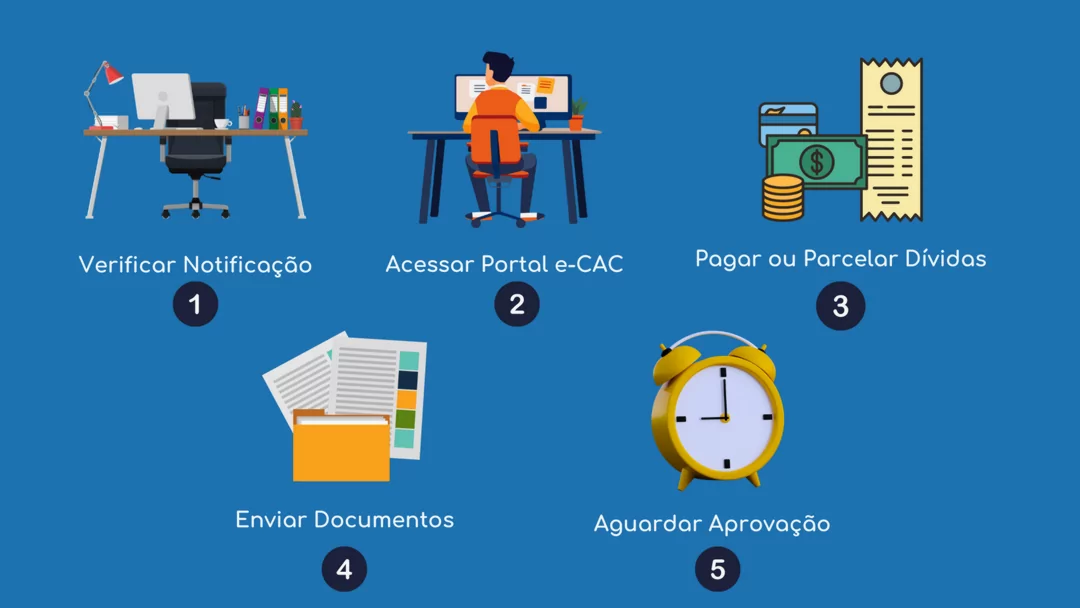Exclusion from Simples Nacional is a problem that can seriously affect the financial health of micro and small companies. In 2024, the rules for exclusion remain strict, and thousands of companies run the risk of losing the benefit of this simplified tax regime. But what should you do if you or your company find yourself in this situation?
This article will explain the main reasons for exclusion, how to avoid it, the steps to regularize the situation and how to reverse the exclusion.
What is Simples Nacional?
Simples Nacional is a special tax regime for micro and small companies, created to simplify tax collection. It unifies the payment of several taxes in a single form and offers reduced rates, as well as simplifying tax and labor obligations. However, in order to remain in this system, a series of requirements must be met.
Main reasons for exclusion from the simple national system
There are several reasons why a company may be excluded from Simples Nacional, some of which include:
- Exceeding the billing limitFor 2024, the ceiling for small companies is R$ 4.8 million per year. Exceeding this amount results in automatic exclusion.
- Debts with the IRS or INSSCompanies that are not up to date with their taxes, especially with the IRS and the INSS, are at great risk of being excluded.
- Carrying out activities that are not permittedSome economic activities are not covered by the Simples Nacional regime. If the company starts operating in prohibited areas, it can be automatically excluded.
- Registration irregularitiesErrors in company registration, such as the inclusion of legal partners (not allowed in Simples), can also lead to exclusion.
- Fraud and non-compliance with obligationsCompanies that commit tax fraud or fail to comply with legal obligations will be excluded from the scheme.
Consequences of exclusion
When a company is excluded from Simples Nacional, it loses the benefits of reduced tax rates and tax simplification. This means that it is now taxed under the traditional regimes, such as Presumed Profit or Real ProfitIn addition, the company has to deal with greater complexity in accessory obligations, such as more detailed accounting and tax bookkeeping.
How to regularize the situation and reverse the exclusion
If your company has been notified by the IRS or another competent body about its exclusion from Simples Nacional, don't despair. There are clear steps to regularize the situation and, in some cases, even reverse the exclusion.
1. Check the Notification
The IRS sends a notification informing you of the pending issues that led to the exclusion. It details the reason and offers a deadline of 30 days for the company to take the necessary measures
2. Access the e-CAC Portal
The entire process of contestation or regularization can be done online through the portal e-CAC (Federal Revenue Service Virtual Service Center). To access the portal:
- Enter the Receita Federal website and log in with your details (digital certificate or access code).
- In the menu, select "Legislation and Process" > "Digital Processes".
- Click on "Request Service via Digital Process" and choose "Challenge Exclusion from Simples Nacional".
3. Settling debts
If the exclusion is due to debts with the INSS, Receita Federal or other bodies, the first step is to regularize these pending issues. Options include:
- Full settlement of the debt.
- Debt installments: installments are a viable option and help maintain the company's cash flow without choking off finances.
4. Document gathering
Prepare the necessary documents, such as the Statement of Claim and proof that the situation has been regularized. This must be sent through the e-CAC itself, where the process will be analyzed by Receita.
5. Waiting for analysis
After submitting the challenge and the documents, the IRS will analyze the case and, if all the pending issues are resolved, the exclusion can be reversed.
The bill to make exclusion more flexible
In 2024, the Complementary Bill 37/23The new law could change the rules for returning to Simples Nacional. Today, if a company is excluded, it can only apply to return to the system next year, in January. The bill proposes that, once the pending issues have been settled, the company can return to Simples in the same year, without having to wait until the following year.
This change is important because many companies end up being excluded due to problems that can be resolved quickly, such as paying off a debt. With the bill, the process would be more agile, benefiting mainly small businesses that depend on Simples to remain competitive.
Read also: How does INSS work for Simples Nacional companies?
How to avoid exclusion from Simples Nacional
To ensure that your company continues to enjoy the benefits of Simples Nacional, it is essential to adopt certain practices:
- Monitor Billing: Use financial control systems that alert you when turnover approaches the R$ 4.8 million threshold.
- Regularize pending issuesKeep tax obligations up to date, avoid accumulating debts with the IRS and the INSS and, if there are debts, try to negotiate them as quickly as possible.
- Keeping track of changes to regulationsCheck periodically that your activity is still allowed under the Simples regime.
- Keep the register up to date: Avoid errors in registration, such as the inclusion of legal partners, and always keep the data correct.
Conclusion
Exclusion from Simples Nacional is a process that can have severe consequences for the company, especially in terms of the tax burden. However, there are ways to reverse the exclusion, as long as the pending issues are settled within the deadline.
A CLM Controller offers complete consultancy for companies that need to regularize pending tax issues, contest exclusions or refile under Simples Nacional. With a highly qualified team and experience in accounting for small businesses, we ensure that all processes are carried out quickly and safely, giving you peace of mind so you can concentrate on growing your business.












